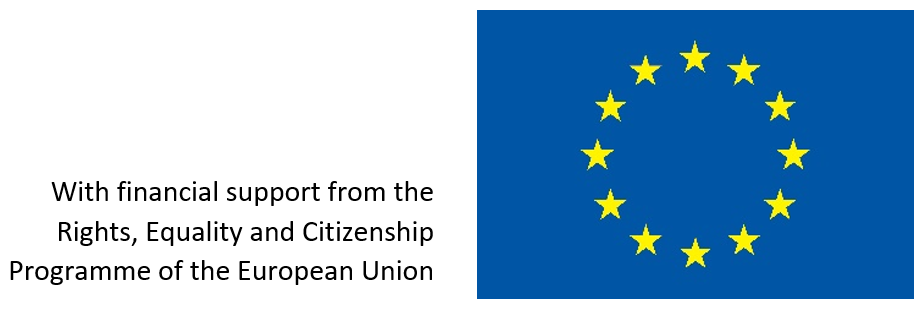„Ni una menos! Vivas nos queremos!”
(“Not one [woman] less! We want to stay alive!”)
This “collective scream against machista violence”[1] is born in Argentina, a country where every 30 hours a woman is killed. In 1995, Susana Chávez, a Mexican poet, was the first to protest the femicides in Ciudad Juárez, writing the sentence “Ni una muerta más” (not one more woman dead) in her poems. Her activism was worth her life and in 2011 Susana was killed for the fact of being a woman.[2] Her words have been the inspiration for Ni Una Menos, a grassroot feminist movement fighting against gender-based violence and femicides.
The movement was founded in 2015 in Argentina, after a series of atrocious femicides stroke the country. Within others, the femicide of Chiara Páez, a 14-year-old pregnant girl, brutally killed by her boyfriend, and the femicide of Lucía Pérez, a schoolgirl who was drugged, raped and tortured, and died because of cardiac arrest caused by the pain. The latter provoked outrage across the country also because the court ruled in favor of the two rapists, despite the medical evidences of extreme sexual violence[3].
Ni Una Menos immediately took the streets, organizing rallies in eighty cities of Argentina on June 3, 2015 and repeating itself 4 times a year (every March, June, October and November). The massive demonstrations, gathering thousands of people of every age and gender, were consolidating the necessity of a feminist force to direct public and political attention to the terribly high femicide rate. Since 2015, Ni Una Menos transcended Argentina’s borders and spread across Latin America, a region which includes 14 of the 25 countries with the highest rates of femicide in the world.[4]
Following the death of Lucía Pérez, a women’s mass strike was organized on October 19, 2016 in Buenos Aires. Tens of thousands of Argentinians took the streets to join Ni Una Menos, waving portraits of Lucía and other women murdered. The strike also consisted in a one-hour pause from work and study, with protesters dressed in mourning for what became known as Black Wednesday.[5] On March 8, 2017, Ni Una Menos took part to the international women’s strike and in Buenos Aires half a million people marched, united against gender-based violence. The international women’s strike had an unprecedented success in mobilizing masses not only in Argentina, but also in more than 50 countries around the world.
At the same time, the power of Ni Una Menos crossed many borders, and the movement spread not only to other Latin American countries, but also in the USA and Europe. For instance, at the end of 2016 the “Argentine call” arrived in Italy too, where the movement Non Una di Meno was founded. It defines itself as a feminist, anti-fascist and anti-racist movement, and through an intersectional approach it aims at unmasking and fighting every form of patriarchal oppression and violence.
The worldwide participation to the cause of Ni Una Menos is demonstrating that women’s rights are human rights, and women from all over the world are suffering the same forms of discrimination, which are deeply rooted in patriarchal systems. Feminist movements underline that fighting against patriarchy implies recognizing its systemic character and its many consequences, such as physical, psychological, economical, sexual, institutional violence against women*, gender pay gap, sexual objectification, illegality of abortion, violation of transgender and sex workers’ rights. Thanks to Ni Una Menos too, this fight is gaining momentum, women are telling their stories and their voice is getting stronger. Now it must be heard too.
By Elena Floriani, WAVE Communication & Research Officer
Sources
[1] www.niunamenos.com.ar
[2] Vernetti, Lucía. “La Historia De Ni Una Menos: Cómo y Por Qué Surgió El Colectivo Feminista.” VIX, VIX, 7 Mar. 2019, www.vix.com/es/ciudadanos/182672/la-historia-de-ni-una-menos-como-y-por-que-surgio-el-colectivo-feminista.
[3] Al Jazeera. “Thousands in Argentina Protest Acquittal in Teenage Girl’s Murder.” News | Al Jazeera, Al Jazeera, 6 Dec. 2018, www.aljazeera.com/news/2018/12/thousands-argentina-protest-acquittal-teenage-girl-murder-181206094117136.html.
[4] “A Gendered Analysis of Violent Deaths.” Small Arms Survey – A Gendered Analysis of Violent Deaths, 18 Apr. 2019, www.smallarmssurvey.org/about-us/highlights/2016/highlight-rn63.html.
[5] Goñi, Uki. “Argentina’s Women Joined across South America in Marches against Violence.” The Guardian, Guardian News and Media, 20 Oct. 2016, www.theguardian.com/world/2016/oct/20/argentina-women-south-america-marches-violence-ni-una-menos.






